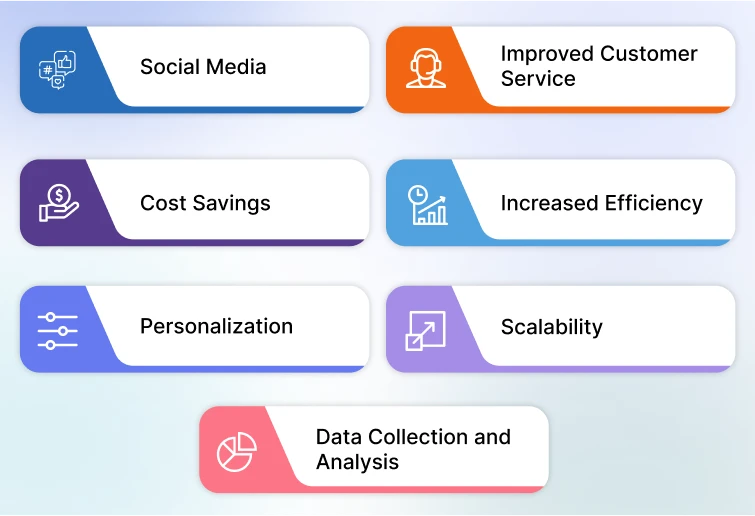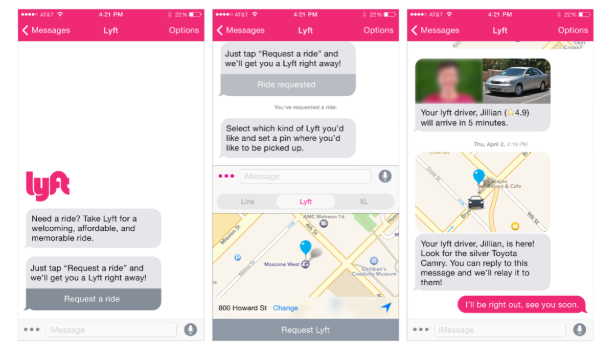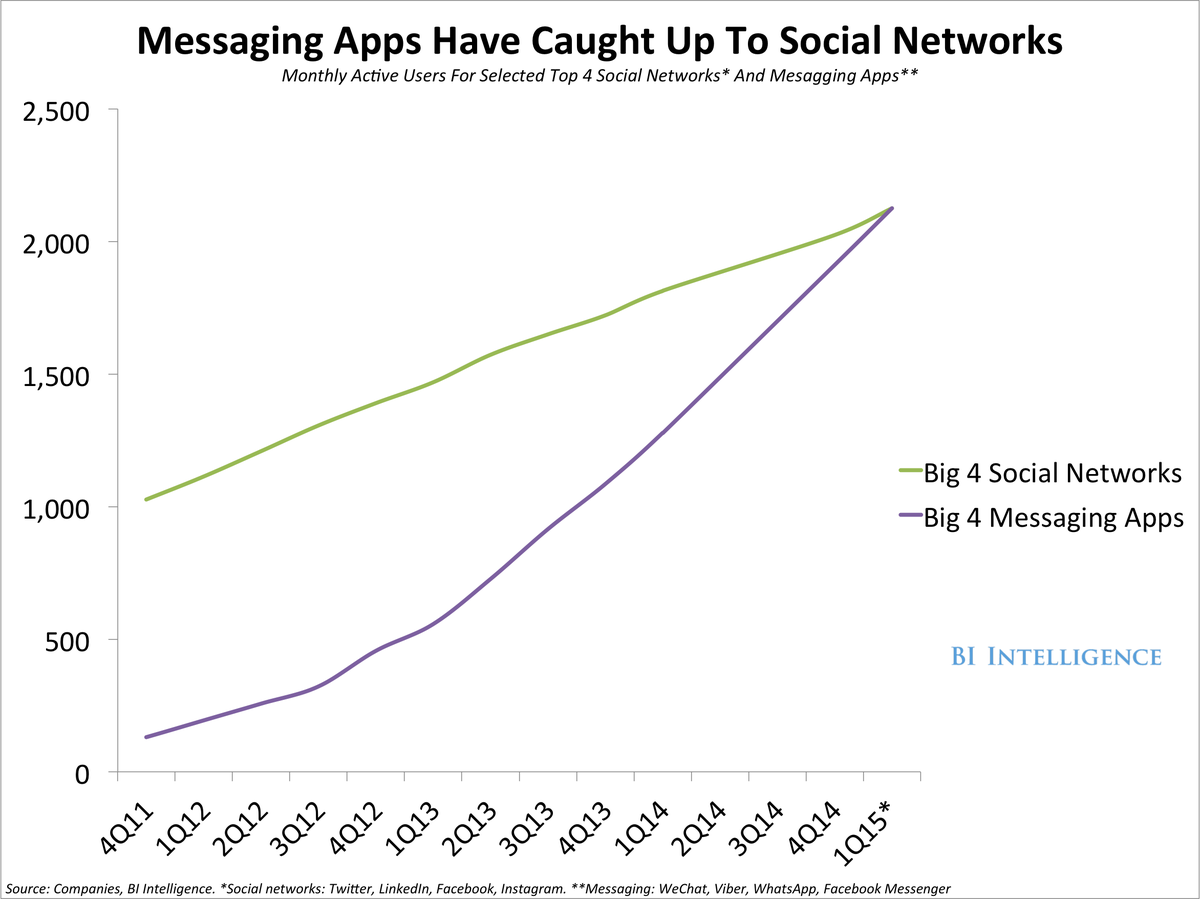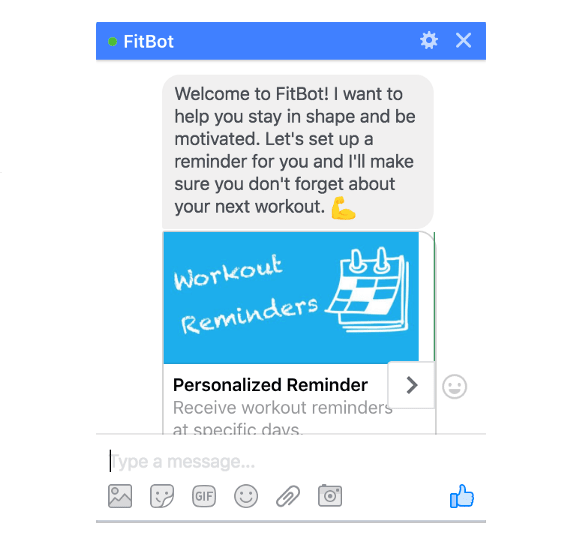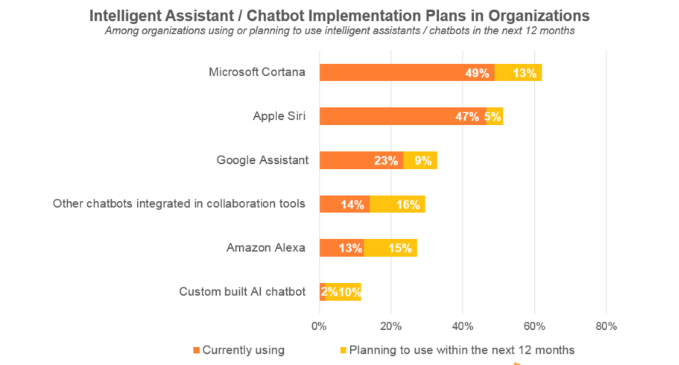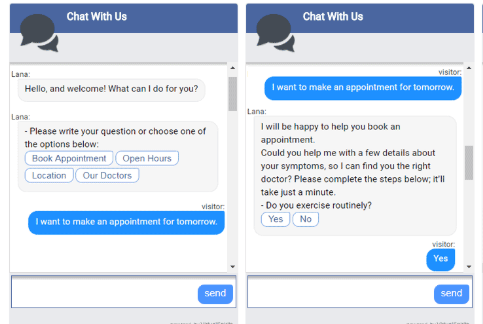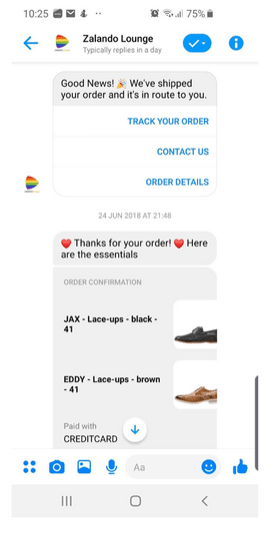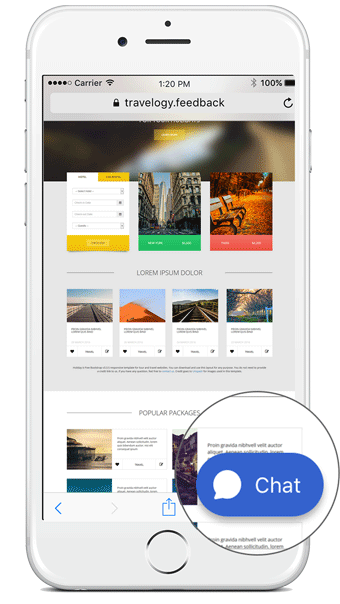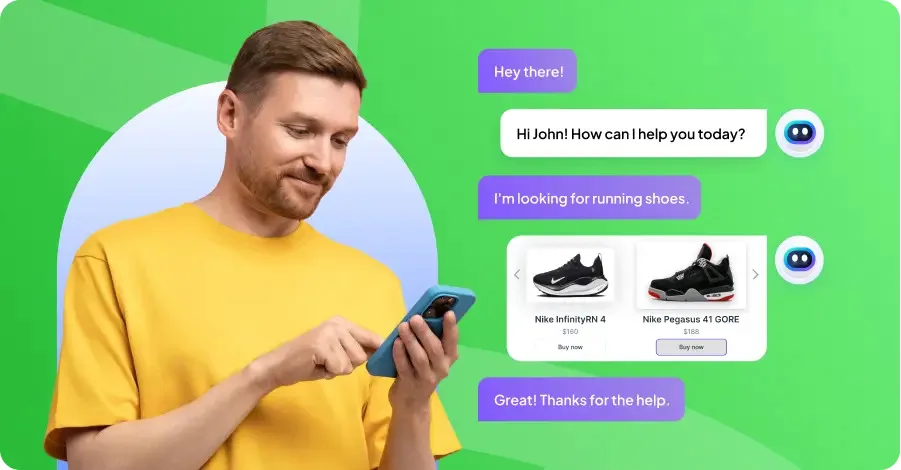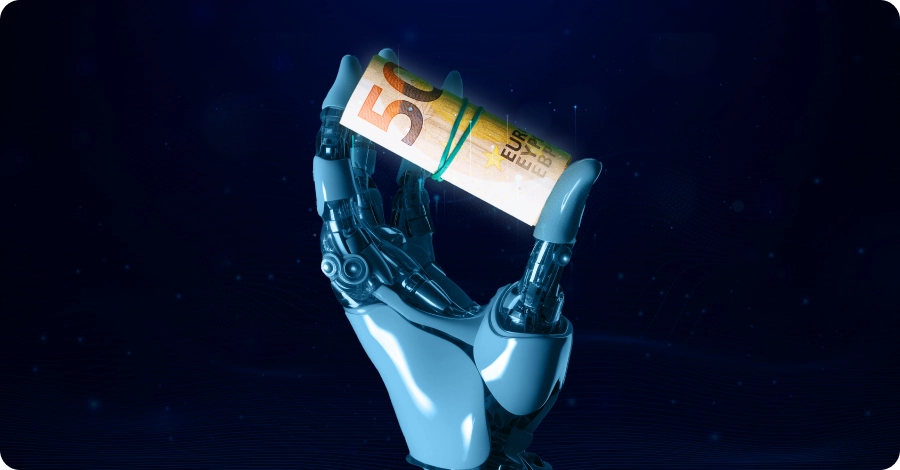15 Real-Life Chatbot Use Cases That Really Work
- October 10, 2019
- 16 mins read
- Listen

Table of Content
Businesses are constantly seeking innovative solutions to meet evolving customer demands and streamline operations. One such technological advancement that has gained significant traction in recent years is the utilization of chatbots. These AI-powered conversational agents are revolutionizing the way companies engage with their customers, handle inquiries, and automate tasks.
AI chatbots for business enable organizations to shift 64% of agents’ focus to solving complex issues, compared to 50% without AI.
In this guide, we’ll explore the diverse use cases of chatbots across industries, benefits, and best practices to harness their full potential in driving business success.
What is a Chatbot?
A chatbot is a program powered by artificial intelligence (AI) that conducts conversations with users through text or speech interfaces. These conversations can simulate human interaction enabling users to interact with the chatbot naturally and conversationally.
Chatbots are designed to understand user queries, provide relevant responses, and perform tasks or actions based on the context of the conversation. They can be integrated into various platforms such as websites, messaging apps, and voice assistants. And, it serves a wide range of purposes including customer support, sales assistance, information retrieval, and task automation.
It leverages technologies such as natural language processing (NLP), machine learning (ML), and natural language understanding (NLU) to continuously improve its ability to understand and respond to user inputs effectively.
7 Key Benefits of Using Chatbots
-
24/7 Availability: Chatbots can provide assistance and support to users round-the-clock. It offers immediate responses to inquiries and resolving issues even outside of regular business hours.
-
Improved Customer Service: It can handle a large volume of customer inquiries simultaneously to reduce wait times and provide consistent and accurate responses. It leads to improved customer satisfaction.
-
Cost Savings: It helps businesses save on operational costs associated with hiring and training human agents by automating routine tasks and customer interactions. While still providing efficient service.
-
Increased Efficiency: With a Chatbot, you can streamline processes by automating repetitive tasks such as appointment scheduling, order tracking, and FAQs, freeing up human agents to focus on more complex or high-value activities.
-
Personalization: Chatbots offer personalized recommendations, content, and assistance based on user preferences, past interactions, and behavioral data, enhancing the overall user experience.
-
Scalability: It plays an imperative role in handling increasing user demand without the need for additional resources. It is a flexible solution for businesses experiencing growth or fluctuating demand.
-
Data Collection and Analysis: Chatbots can gather valuable insights from user interactions, such as frequently asked questions, customer preferences, and feedback, which businesses can use to improve products, services, and marketing strategies.
15 Best Chatbots Use Cases and Examples
Chatbots are being used across different aspects of business and have had many proven records of success. We have outlined some of the key areas of chatbot use cases that have a significant impact on improving business productivity. So, let’s explore the mainstream use cases of chatbots;
- Chatbot use cases in customer service
- Application of chatbots for sales
- Chatbot use cases marketing
- Application of chatbots for social media
- Conversational AI for messaging apps
- Chatbot usage for human resources
- Usage of chatbots for personal services
- Voice-based chatbots
- Increase user retention with chatbots
- Appointment Scheduling
- Order Tracking and Updates
- Feedback Collection
- Language Translation Services
- Onboarding and Training
- Expense Tracking
Let us comprehensively discuss how the application of chatbots has transformed alleys across different business functions and industries of sizes.
#1. Chatbot Use Cases in Customer Service
Customer service is one of the vital business functions where chatbots have a great impact. As customers are always looking to get quick solutions and personalized help that will boost their experience, chatbots are a valuable asset.
67% of consumers worldwide used a chatbot for customer support
Chatbots for customer service can help businesses engage clients by answering FAQs and delivering context to conversations. Businesses can save customer support costs by speeding up response times and improving first response time which boosts user experience.
Deploying chatbots on your website boosts operational efficiency and offers convenience to customers. Bots not only streamline customer experiences at every stage in the service process but are also aids to the support agents.
Bots are proficient in resolving common queries while reducing the need for human interaction. 68% of customers say that they enjoy getting an instant response and answers to simple questions from a chatbot.
What kind of support queries generally do website visitors ask?
- They want to know more about specific products or services
- Learn about technical support assistance
- Many show interest in billing and pricing information
- They also enquire about orders and shipping
When implemented as a part of customer support, bots can automate the whole process of serving customers, when the support reps are busy or unavailable. The 24×7 availability increases the resolution rate which reduces customer churn rate.
Conversational bots are widely used by banks to deliver instant customer service. HDFC Bank’s EVA chatbot is available 24 x 7 to help with banking queries. It helps to get the answers you are looking for without the hassle of waiting on a call or at a branch.
The EVA bot has been configured to handle queries on more than 7,500 FAQs, along with information on the bank’s products and services. With an accuracy level of over 85% and uptime of 99.9%, EVA is boosting customer experience using various conversational interfaces.
The chatbot gives you suggestions for answers and even questions to ask. You can also message Digit commands by texting the number to check your balance updates.
#2. Chatbot Use Cases for Sales
Chatbots help businesses ask contextually relevant questions, qualify leads, and book sales meetings, at scale. Bots convert 4x higher than traditional lead generation tools because people prefer conversations. So, engage with your visitors 24×7, to interact, and generate more leads.
How do chatbots help in lead generation?
- Segment your audience: Bots enable you to identify the product interests, likes, and dislikes of visitors & customers, and segment them based on their responses.
- Qualify leads: Bots use the sales questionnaire to convert your website, and visitors, into potential prospects and send them to the right sales representative for further follow-up.
- Hybrid chatbot: Most businesses do not automate chat. The best way is to correctly balance the bot support for simple queries and human support for complex issues.
Vainu, a data analytics service, asks questions to visitors with their VainuBot. Visitors can quickly make choices by simply selecting the option most relevant to them. At the end of the conversation, the bot asks for their email address to book a demo or send a report. It saw more leads generated compared to a simple lead generation form.
#3. Chatbot Use Cases for Marketing
The messenger marketing ecosystem has changed for many businesses using chatbots, but the goal remains the same for all i.e. instant and convenient service. 80% of businesses are expected to have some sort of chatbot automation.
Customers prefer prompt actions delivered by chatbots fueled with artificial intelligence for better customer engagement. Chatbots can engage with your customers with immediate responses and increase customer satisfaction, which makes them happy to retain your brand.
How do AI bots improve customer engagement?
- Chatbots are best for customers who expect an instant response, typically less than 30 seconds.
- A chatbot template for marketing will be active 24×7 to engage customers to handle information-based questions and reduce support tickets.
- Chatbots are easily scalable during busy hours to engage customers and deliver a better customer experience.
Emirates Vacations is one of the best chatbot examples of how they deployed chatbots for boosting customer engagement.
Considering the average CTR for display ads is low at 35%, Emirates Vacations built a chatbot within its display ads. The company targets different visuals and bot sequences based on the page someone’s browsing. The engagement rates have risen 87% since deployment.
#4. Chatbot Use Cases for Social Media
Isn’t it vital we believe to engage with customers where they are?
With an increase in messenger platforms for business, one of the most important channels is social. As per a Business Insider report, “Consumers choose the main four social networks – Facebook, Twitter, Instagram, and LinkedIn”.
Chatbots significantly boost user engagement on these popular social websites and communicate with customers through live chat platforms like Facebook Messenger. Bots are taking over social media marketing as they allow consumers to engage with them in terms of customer service, and transactional engagements.
Lyft accepts ride requests via chat on Facebook Messenger and Slack. The chatbot helps you to know the current location of your driver and shows you a picture of the license plate and car model.
#5. Conversational AI for Messaging Apps
The global chatbot market is expected to reach $1.23 billion by 2025 with a compounding annual growth rate of 24.3%.
Conversational commerce is preferred over traditional ways. With the ever-increasing popularity of messaging, chatbots are now the center of business messaging. This concept encourages buyers to be more ready and willing than ever to shop online with bots.
The report says consumers prefer using the main four messaging apps — Facebook Messenger, WhatsApp, WeChat, and Viber.
Source: Business Insider
Here is how messaging platforms with chatbot capabilities can help businesses.
- Customers prefer brands offering bot support. 47% of users are open to purchasing items through a bot.
- Chatbots can engage customers by answering their simple queries when the support team is busy or not available.
Book My Show, the leading online booking app has integrated WhatsApp for Businesses to send ticket confirmations as WhatsApp messages by default. The users who book tickets on BookMyShow will be notified through a WhatsApp message along with the confirmation text or an M-ticket (mobile ticket) QR Code.
#6. Chatbot Usage for Human Resources
Like every superhero has some special power for the workforce of the future, and that power could be chatbots – What do you think?
Human Capital Trends report found that only 17% of global HR executives are ready to manage a workforce with people, robots, and AI working side by side.
Recruitment is an important part of HR activity. With chatbots, tasks can be handled seamlessly. Mya, the AI recruiting assistant for example manages large candidate pools, giving FirstJob recruiters and hiring managers more time to focus on interviews and closing offers.
How does Mya do that?
- Mya can chat with many candidates simultaneously via SMS, Facebook, Skype, email, or chat
- It asks to prescreen questions, responds to FAQs, delivers application progress updates, gives tips and guidance, sends alerts to the candidates, and administers assessments & challenges
- It provides vital information for recruiters and managers, ranking candidates on factors like experience, recent activity, engagement, and other metrics.
#7. Usage of Chatbots for Personal Services
Fitness apps can be helpful for individuals who don’t mind the extra engagement with the app itself. However not all the applications have the headspace to stay engaged with apps and consistently put in personal fitness information, diets, or design workout plans.
Chatbots can be used to streamline your personal services such as fitness, diet, health, or day-to-day activities. Every fitness goal requires a different set of workout plans and a nutrition diet to be followed.
FitBot is the way trainers communicate with clients, both onsite and remote coaching. As per research, the participants who used the chatbot were 26% more likely to meet or exceed personal fitness goals compared to participants who didn’t use the technology.
Here is how the fitness chatbot helped customers.
- The chatbot helped the participants to stay consistent with their workout routine and also use the bot for a variety of other physical activities.
- A chatbot can help to replicate an accountability partner who sends out engaging push notifications on specific days like a personal fitness trainer.
- Bots can also provide personalized workout and diet recommendations based on the data entered by users like their height, weight, fitness goals, etc.
#8. Voice-based Chatbots
As per Accenture research, “Digital consumers prefer messaging platforms that have voice and text-based interfaces”.
while the conversational AI vs. chatbot debate has been going on for a long, we should not forget how conversational bots could use artificial intelligence (AI) to assist users over both text and voice. Voice chatbots are all about facilitating your users with a seamless experience with your business. They are one of the important conversational banking trends adopted by many banks.
Here are the key reasons why voice bots are being popular.
- Voice bots engage customers with automated, intelligence-based communication.
- You can provide reliable data insights to your customers with voice-enabled chatbots.
- They offer personalized solutions to customer requests.
#9. Chatbots Improve User Retention
Chatbots are one of the best tools to improve user retention by managing customer service issues in a timely, efficient manner and upselling & cross-selling relevant products and services. 34% of customers returned to the business within 30 days after iterating with the bot.
Customers prefer brands that respond to customers’ queries immediately around the clock. Implementing chatbot technology can be one of the best customer retention strategies and significantly increase customer lifetime value (CLTV).
10. Appointment Scheduling
Chatbots streamline the process of booking appointments for various services by enabling users to book appointments conveniently through conversational interfaces. These chatbots typically integrate with the business’s scheduling system, allowing users to check availability, select preferred dates and times, and confirm bookings seamlessly.
Your customer can interact with the chatbot using natural language, making the experience intuitive and user-friendly. Appointment scheduling chatbots reduce the need for manual intervention in appointment booking, saving time for both customers and businesses. They can also send automated reminders and notifications to users. It reduces the likelihood of missed appointments.
Pro Tips:
- You should keep instructions simple and guide users step-by-step to avoid confusion.
- You need to utilize data to offer personalized appointment suggestions and improve user experience.
- Integrate with scheduling systems for real-time availability updates, minimizing conflicts and enhancing efficiency.
11. Order Tracking and Updates
It provides customers with real-time information regarding the status and whereabouts of their orders. Through conversational interfaces, users can easily inquire about their orders, receive updates on shipping progress, and address any issues or concerns they may have.
These chatbots typically integrate with the business’s order management system or logistics partners to provide accurate and up-to-date information. These types of chatbots enhance transparency and customer satisfaction. They reduce the need for customers to reach out to support teams for order inquiries.
Pro Tips
- Allow users to customize their notification preferences, such as receiving updates via email, SMS, or within the chat interface, to accommodate different communication preferences.
- You can implement interactive features within the chatbot, such as clickable tracking links or maps, to provide users with visual aids and a more engaging tracking experience.
12. Feedback Collection
Chatbots streamline the process of gathering valuable insights from customers regarding products, services, or overall experiences. These chatbots engage users in conversational interactions to solicit feedback on various aspects of their interaction with the business. Through structured questioning or open-ended prompts, users can provide feedback in a convenient and accessible manner.
You can integrate the chatbots with analytics tools to aggregate and analyze feedback data. It enables businesses to identify trends, strengths, and areas for improvement. Businesses can gather actionable insights in real time for timely adjustments and enhancements to products or services based on customer input.
Pro Tips:
- You can trigger feedback requests at relevant touchpoints throughout the customer journey, such as after a purchase, customer service interaction, or website visit, to capture feedback when it’s most top-of-mind for users.
- Offer users the option to provide feedback using various formats, such as text, voice, or emojis, to accommodate different communication preferences and encourage higher engagement.
13. Language Translation Services
It facilitates communication between users who speak different languages by providing real-time translation services. These chatbots leverage natural language processing and machine learning algorithms to translate text or speech inputs from one language to another. Your users can engage with the chatbot in their preferred language, and the chatbot responds with translated content. It helps to deliver seamless communication across language barriers.
Language translation chatbots can be integrated into various platforms, such as messaging apps, websites, or customer support channels. It expands accessibility and inclusivity for diverse audiences. These chatbots foster cross-cultural communication, support global business operations, and enhance user experience in multilingual environments.
Pro Tips:
- You need to regularly refine translation models for better accuracy across languages.
- Account for cultural nuances to ensure clear and respectful communication.
- Support both text and speech inputs for enhanced user flexibility.
14. Onboarding and Training
Onboarding and training chatbots facilitate the orientation and training process for new employees or users by providing guidance, resources, and assistance in a conversational format. These chatbots are designed to streamline the onboarding experience by delivering essential information. It explains company policies and procedures and answers common questions.
Onboarding and training chatbots offer personalized support tailored to individual needs, helping users navigate through various tasks and learning materials.
They can also integrate with existing learning management systems or knowledge bases to provide access to relevant resources and training modules.
Pro Tips:
- You need to incorporate interactive elements such as quizzes, simulations, or gamified activities to enhance engagement and retention during the training process.
- Implement features that allow users and administrators to track progress, completion rates, and performance metrics to assess learning outcomes and identify areas for improvement.
15. Expense Tracking
It involves monitoring and recording all financial transactions incurred by an individual or organization. This process helps individuals and businesses manage their budgets, track spending patterns, and make informed financial decisions. Expense tracking can be done manually using spreadsheets or automated through specialized software and mobile apps.
By categorizing expenses, setting budgets, and analyzing spending trends, individuals and businesses gain valuable insights into their financial health and can identify areas for optimization or cost-cutting. It enables timely bill payments and facilitates tax preparation. You can leverage technology for expense tracking to enhance accuracy, efficiency, and accessibility. It empowers users to maintain financial transparency and achieve their financial goals.
Pro Tips
-
Set up automated reminders or recurring transactions for regular expenses such as rent, utilities, and subscriptions to avoid late payments and maintain financial stability.
- You can utilize expense-tracking mobile apps that offer features such as receipt scanning for expense categorization, and real-time syncing across devices for convenience.
Conclusion
The versatile applications of chatbots across various industries showcase their immense potential in transforming how businesses interact with customers, streamline operations, and drive growth. By leveraging artificial intelligence and natural language processing, chatbots can provide personalized experiences, handle routine tasks efficiently, and gather valuable insights for businesses.
As technology continues to evolve, the role of chatbots will only become more prominent, shaping the future of customer engagement and organizational efficiency. So, you’ll have to utilize chatbots as a strategic tool to empower businesses to stay ahead in a rapidly changing digital landscape.
Chatbots augment customer experience without replacing it. Bots have been used widely across different business functions like customer service, sales, and marketing. With REVE Chat, start a free trial of advanced customer support software and start delivering great experiences to customers.

